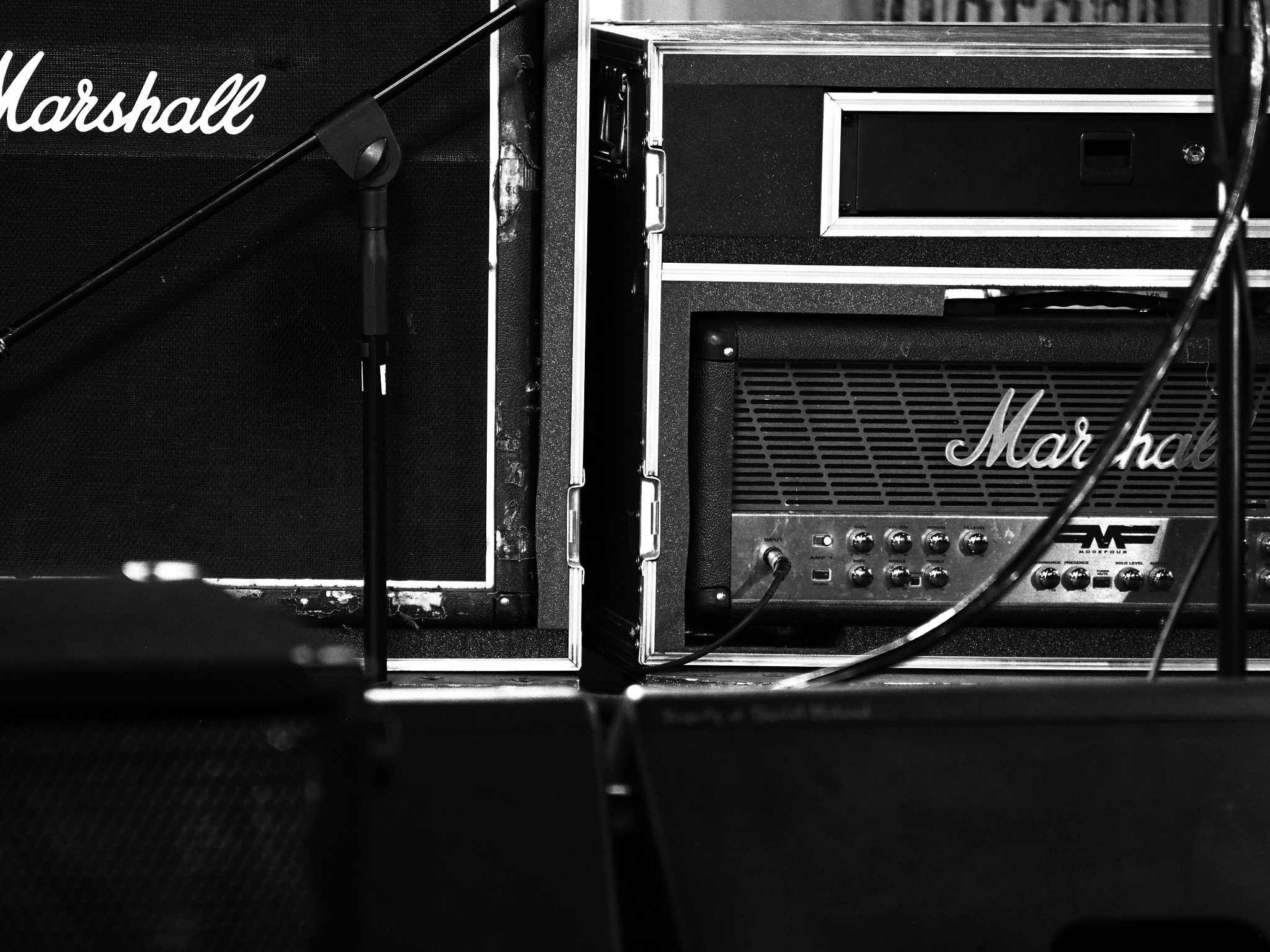More dirt is not necessarily cool dirt.
Please Remember:
The opinions expressed are mine only. These opinions do not necessarily reflect anybody else’s opinions. I do not own, operate, manage, or represent any band, venue, or company that I talk about, unless explicitly noted.

 Want to use this image for something else? Great! Click it for the link to a high-res or resolution-independent version.
Want to use this image for something else? Great! Click it for the link to a high-res or resolution-independent version.One day, just before Fats closed, I was talking with Christian from Blue Zen. We were discussing the pursuit of tone, and a discovery that Christian had made (with the help of Gary at Guitar Czar). Christian had been trying to get more drive from his amp, which already had a fair bit of crunch happening. So, he had put a distortion pedal between the guitar and the amplifier input.
He hadn’t liked the results. He found the sound to be too scratchy and thin.
Upon consultation with Gary, the distortion pedal had been removed, and a much cleaner boost substituted. Christian was definitely happier.
But why hadn’t the original solution worked?
The Frequency Domain
Distortion can be something of a complex creature, but it does have a “simple” form. The simple form is harmonic distortion. Harmonic distortion occurs when the transfer function of an audio chain becomes nonlinear, and a tone is passed with additional products that follow a mathematical pattern: For a given frequency in a signal, the generated products are integer multiples of that frequency.
Integers are “whole” numbers, so, for a 200 Hz tone undergoing harmonic distortion, additional tones are generated at 200 Hz X 2, 3, 4, 5, 6, etc. Different circuits generate the additional tones at different intensities, and which pattern you prefer is a matter of taste.
For example, here’s an RTA trace of a 200 Hz tone being run through a saturation plugin.
(The odd-numbered harmonics are definitely favored by this particular saturation processor’s virtual circuit.)
The thing is that harmonics are always higher in frequency than the fundamental. The “hotter” the harmonic content, the more the signal’s overall frequency response “tilts” toward the high end. As distortion piles up, the overall timbre of a signal can start to overwhelm the lower-frequency information, resulting in a sound that is no longer “warm,” “thick,” “fat,” “chunky,” “creamy,” or whatever adjective you like to use.
Take a look at this transfer function trace comparing a signal run through one distortion stage and two distortion stages. The top end is very pronounced, with plenty of energy that’s not much more than “fizz” or “hiss”:
If you chain distortion into distortion, you’re quite likely to just pile up more and more harmonic content, thus emphasizing the high end more than you’d prefer. There’s more to it than that, though. Look at this RTA trace of a tone being run through chained saturation plugins:
To make things easier to see, you can also take a look at this overlay of the two traces:
There’s noticeably more energy in the high-end, and the distortion products are also present at many more frequencies. The original harmonic distortion tones are being distorted themselves, and there may also be some intermodulation distortion occurring. Intermodulation distortion is also a nonlinearity in a system’s transfer function, but the additional tones aren’t multiples of the original tones. Rather, they are sums and differences.
IM distortion is generally thought to sound pretty ugly when compared to harmonic distortion.
So, yes, chaining distortion does give you more drive, but it can also give you way more “dirt” than you actually want. If you like the sound of your amp’s crunch, and want more of it, you’re better off finding a way to run your clean signal at a higher (but still clean) level. As the amp saturates, the distortion products will go up – but at least it will be only one set of distortion products.
Dynamic Range
The other problem with heaping distortion on top of distortion is that of emphasizing all kinds of noises that you’d prefer not to. Distortion is, for all intents and purposes, a “dirty” limiter. Limiting, being an extreme form of compression, reduces dynamic range (the difference between high and low amplitude signals). This can be very handy up to a point. Being able to crank up quieter sounds means that tricks like high-speed runs and pinch-harmonics are easier to pull off effectively.
There’s a point, though, where sounds that you’d prefer to de-emphasize are smashed right up into the things you do want to hear. To use a metaphor, the problem with holding the ceiling steady and raising the floor is that you eventually get that nasty old carpet in your face. The noise of your pickups and instrument processors? Loud. Your picking? Loud. Your finger movement on the strings? Loud. Any other sloppiness? Loud.
Running distortion into distortion is a very effective way to make what you’d prefer to be quiet into a screaming vortex of noise.
Is Chaining Distortion Wrong?
I want to close with this point.
Chaining distortion is not “wrong.” You shouldn’t be scared to try it as a science experiment, or to get a wild effect.
The point of all this is merely to say that serial distortion is not the best practice for a certain, common application – the application of merely running a given circuit at a higher level. For that particular result, which is quite commonly desired, you will be far better served by feeding the circuit with more “clean” gain. In all likelihood, your control over your sound will be more fine-grained, and also more predictable overall.



